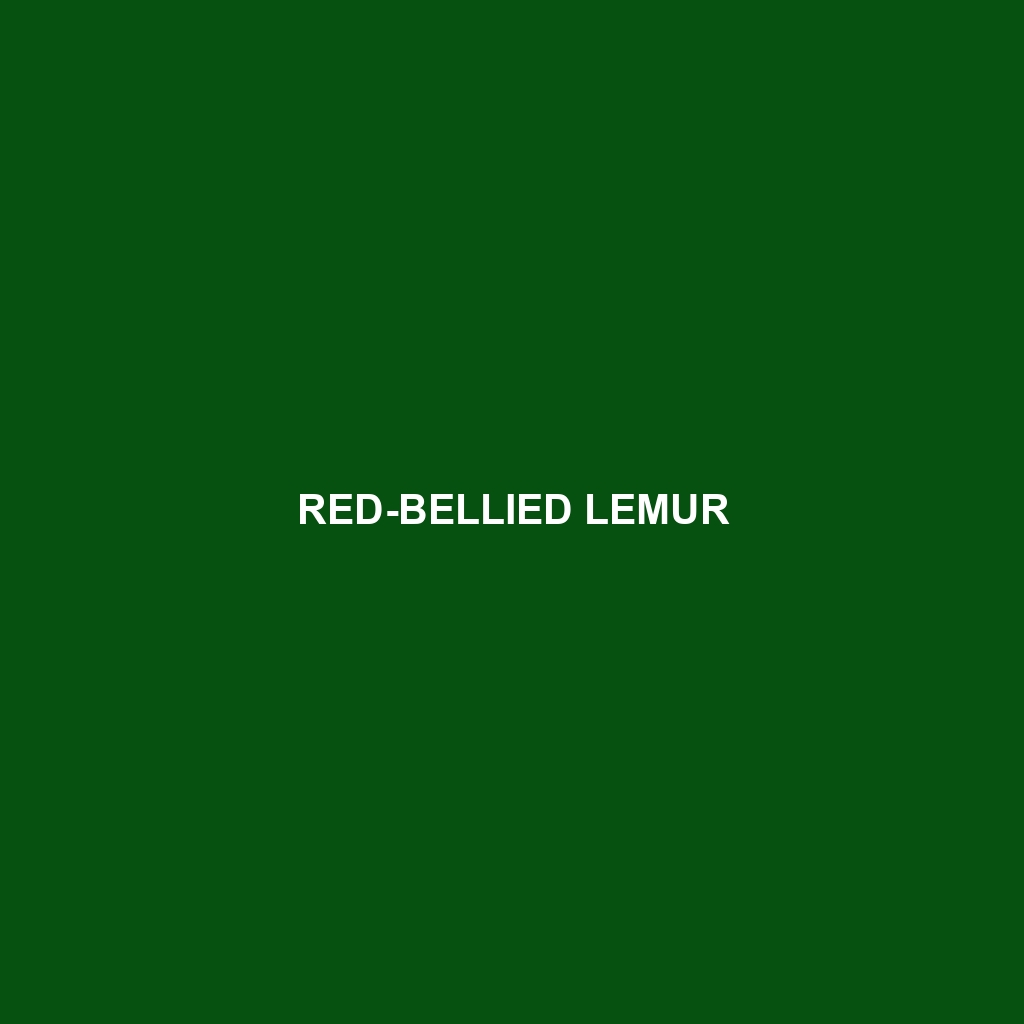Red-fronted Brown Lemur
Common Name: Red-fronted Brown Lemur
Scientific Name: Eulemur rufifrons
Habitat
The Red-fronted Brown Lemur is primarily found in the dry deciduous forests and the humid forests of the western and northern regions of Madagascar. Their range includes areas along the Tsiribihina River and the Bemaraha Massif, where the elevated terrain provides a unique environment suited to their lifestyle. This species thrives in both primary and secondary forests, showcasing their adaptability to different land uses.
Physical Characteristics
Measuring approximately 43 to 57 centimeters in body length, with an additional 25 to 28 centimeters of tail, the Red-fronted Brown Lemur exhibits a striking appearance. Its coat is predominantly brown with a distinctive rusty red patch on the forehead and facial area, giving it its name. They also have a lighter brown underside and large, expressive eyes that facilitate nocturnal activities.
Behavior
Red-fronted Brown Lemurs are known for their social structures, typically living in groups that can consist of anywhere from 3 to 15 individuals. They are diurnal, meaning they are active during the day, and often exhibit playful and vocal behaviors. Their complex communication includes a range of calls, which signals alarm and coordinates social interactions among group members.
Diet
This species primarily feeds on a diet consisting of fruits, leaves, and flowers. Their preference for ripe fruits often leads them to inhabit areas abundant in flowering and fruiting plants. Additionally, they occasionally consume young shoots and insects, allowing them to diversify their nutrient intake.
Reproduction
The breeding season for Red-fronted Brown Lemurs typically occurs from September to November, with females displaying specific behaviors to attract males, including scent marking. Gestation lasts about 120 days, with females usually giving birth to a single offspring. The young lemurs are cared for primarily by the mothers, and they begin to forage independently at around five months old.
Conservation Status
The Red-fronted Brown Lemur is currently listed as Endangered due to habitat loss, hunting, and fragmentation of their environment. Conservation efforts are underway to preserve their habitats and maintain their population numbers, which are dwindling due to ongoing deforestation in Madagascar.
Interesting Facts
One fascinating aspect of the Red-fronted Brown Lemur is their significant role in seed dispersal. They contribute to forest regeneration by eating fruits and subsequently dispersing the seeds through their droppings. This symbiotic relationship illustrates their critical role in promoting biodiversity within their habitat.
Role in Ecosystem
As a fruit-eating primate, the Red-fronted Brown Lemur plays an essential role in its ecosystem by functioning as a seed disperser, which helps maintain the health of their forest habitats. Their foraging habits not only support their survival but also facilitate plant growth, demonstrating their intricate connection with the biodiversity of Madagascar.
